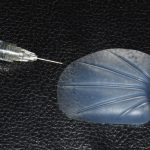The use of injectable fillers has been revolutionary in the augmentation of facial soft tissues. The wide array of different filler compositions and their immediate results with a minimal complication rate has enabled patients to enjoy facial enhancements that could not be envisioned just over a decade ago.
But like all good things, injectable fillers can also be overused or injected for ill-advised purposes. Their simplicity of use makes them easy to place anywhere, literally right down to the bone. As filler techniques are taught to an ever-widening array of injector backgrounds, I have seen an increasing number of patients in whom they are being used for facial bone augmentation purposes. Cheek, chin or jaw angle augmentation are the most common areas of facial filler use.

For bone augmentation, injectable fillers are at a disadvantage compared to facial implants. It is much more difficult to get a smooth and confluent layering that can match that of the shape of any facial implant. Because an injection method can not get into a consistent and widespread subperiosteal layer, uneven material deposition is the norm not the exception. Some injectors get around this issue by placing it above the periosteum in the deep soft tissues which is more likely to result in a more consistent layering of material.
With the increasing recognition of the value of a stable platform onto which to resuspend aging and sagging facial soft tissues, solid implants are superior to injectable fillers. They are not only permanent, but they will feel more like natural bone structure and are much more likely to be symmetrical in cheek and jaw angle augmentation.
Both injectable fillers and solid implants offers excellent options for facial enhancement, but they are not interchangeable. Injectable fillers are for soft tissue volume improvement while implants are for bony augmentation. On the surface, some patients not may see that as not much different. But the facial results of each will make that distinction more clear. Just like trying to use solid implants for soft tissue augmentation, the use of injectable fillers for bone enhancement is likewise limited.
Dr. Barry Eppley
Indianapolis, Indiana


